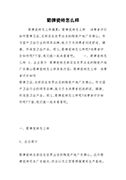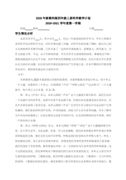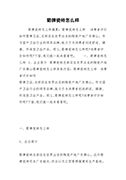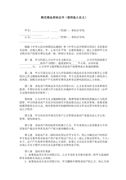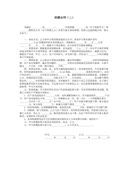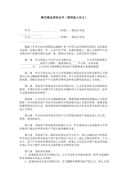《牛津小学英语》1A Unit 1教学设计(精选12篇)一年级英语教案
《牛津小学英语》1A Unit 1教学设计(精选12篇)
《牛津小学英语》1A Unit 1教学设计 篇1
教材简析:
“planning for the weekend”是译林版《牛津小学英语》6a unit6part a,主 要 教学内容是关于娱乐活动类的单词词组,和一般将来时在句中的应用。要求学生围绕这类词组在一定的语境下用“be going to”进行说话,并能在实际生活中熟练地使用,真正让教材服务于生活。设计思路:本节课利用多媒体辅助教学,培养学生学英语的兴趣。通过屏幕呈现动画歌曲“will you join me?”把学生引入课堂教学中。热身运动复习旧知识,也给新课学习作了铺垫。课上教师通过创设真实或半真实的情景与学生进行语言交际,学习、运用本节课词组和句型。“体态语”的运用,座位以小组为单位的排列,为学生创设轻松愉快的英语学习环境,有利于发挥学生最大的能动性。通过课件学习本节课“周末计划”的教学内容,并以各种形式由浅入深的强化训练来巩固课文内容。在拓展运用阶段,让学生通过打电话这一真实的情景进行交际运用,把语言真正应用于实践,做到“学以致用”,最后渗透思想文化教育。
教学目标:
1 能正确地听、说、读、写单词和词组plan, play, have school,take part in 和句型what are you going to... ? we are going to...
2 能正确地听、说、读单词和词组concert, opera, singing contest 和句型is that gao shan? yes, speaking. by the way, what are you going to do... ?
3 能根据图片提供的情景进行描述。
教学重点与难点:四会单词及句型的拼读和运用。
课前准备:
1 教具准备:单词图片、与奥运会有关的福娃图片和国旗、五环旗以及多媒体课件。
2 学生准备:事先布置学生预习本单元的单词。
3 板书准备:预先写好课题unit 6 planning for the weekend
教学过程:
i. classroom management
(歌曲导入,激发兴趣,热身运动,引入新知)
1. listen to a song “will you join me?”
(歌曲能把学生的注意力很快吸引到课堂上来,做好上课前的一切准备。)
2. free talk
t: what day is it today?
what date is it today?
what’s the weather like today?
it’s warm and sunny. let’s do some exercise.(引导学生复习学过的活动类单词及词组。)
3. warming up exercise
t: follow me, please. (多媒体课件上呈现各种运动的场景,教师引导学生边说边做动作。)
t: run, run, running. i like running.
ss: run, run, running. i like running.
t: fly, fly, flying. flying a kite.
ss: fly, fly, flying. flying a kite.(老师说半句,让学生完成下半句,培养学生大脑思维的灵活性。)
t: surf, surf, surfing.
ss: surfing the internet...
(运用体态语及各种操练形式,复习打球类运动、演奏乐器类以及娱乐活动类的词组。)
ii. presentation and practice
(复习导入,联旧引新,自然过度,强化操练。)
1. introduction
t: boys and girls, we have lessons from monday to friday. theyare weekdays. but we don’t have lessons on saturdays and sundays. they are weekends. we don’t have school at weekends.
(板书、操练)
t: i usually do housework at weekends. but this weekend,i’m going to go shopping.
t: what are you going to do this weekend? (板书、操练)
s1: i’m going to go to the park this weekend. (t: good!)
(表扬学生,每发言一次,就奖励一张福娃贴画)
t: (to s1) please ask him.
s1:(to s2)what are you going to do this weekend?
s2: i’m going to do housework this weekend .(t: very good! ) (to s3)
what are you going to do this weekend?
s3: i’m going to play basketball this weekend. (t: well done!) …
(屏幕上呈现各种图片,为学生提供说话的材料)
t: who can ask me the question?
s4: what are you going to do this saturday, miss yin?
t: i’m going to visit the zoo. by the way, what are you going to do this saturday? (板书)
s4: i’m going to …
2.practice and then acting out the dialogue
(幕上呈现多幅娱乐、运动等画面以及句型,师生之间进行强化操练后,学生两人一组讨论周末计划并在小组内进行充分地操练,然后以问答的形式师生、生生、小组之间表演对话。)
eg. --what are you going to do this weekend?
--i’m going to play basketball. (替换词)
by the way, what are you going to do this weekend ?
--i’m going to go to a farm.
t: today we are going to learn “planning for the weekend”
(呈现课题, 并操练)
3 . learn part a of unit 6
a introduce the text.
(通过声音、图片、体态语渗透新内容,并进行操练)
a. t: now, boys and girls, listen carefully. what’s the sound? can you guess? (钢琴声)
yes, the sound of the piano. (课件呈现南希弹钢琴图片,运用体态语) nancy can play the piano. she is going to play the piano at the concert this weekend. (板书、操练)
b. but david can’t. what can he do?
(课件呈现大卫拉小提琴及琴声。)
ss: david can play the violin.
t: good. you are right. he is also going to play the violin at the concert.
c. (师唱京剧片段) what’s song?
ss: (京剧)
t: yes, you are right. it’s beijing opera. do you like to see a beijing opera? (板书及操练)
ss: no, we don’t.
t: i’m sorry. but i like seeing beijing operas.
b. listen, read and say
a. (多媒体播放课文第一部分内容,然后请学生回答问题)
(多媒体呈现语言材料,显得生动、形象、逼真,能引起学生的有意注意,容易激发求知欲,有利于他们更深刻地感知和准确、牢固地记忆所学知识。﹞
what are gao shan and david’s plans for the weekend?
what are they going to do ? let’s listen and watch carefully and find out the answers.
q: what’s the weather like there?
q: do the children have school today?
q: what are they talking about?
b. (阅读课文,根据课文内容判断正“t”误“f”。)
david is going to see the beijing opera with us. ( )
he is going to meet us at six in front of the garden theatre. ( )
...
c. (讲解语言点,角色朗读,然后填写下列表格)
(学生填完表格后,老师检查答案)
(精讲重难点,强化训练;朗读操练,培养学生纯正的语音语调;表格填写,培养学生自主学习和总结概括的能力)
plan for saturday
who : gao shan and his dad, david
plan : see a beijing opera
where : the garden theatre
when: on saturday afternoon plan for sunday
who :david /nancy/gao shan
plan :play the violin /play the piano /go and watch the concert
where:at the concert /at the concert /in the school
when:on sunday afternoon
d. (根据表格内容,让学生复述课文)
(复述课文能加强学生对所学知识的记忆,增强学生的自信心和成就感,提高他们的英语口头表达能力。)
iii. consolidation
(创设情境,巩固新知,角色对话,提高口语会话能力。)
1.(电话铃声,把学生的注意力引导到现实生活中来)
t: i’m sorry, boys and girls. my friend is calling me.
can i answer the phone?
ss: ok.
a: (接电话) hello!
b: hello! is that jenny?
a: yes, speaking.
b: what are you going to do this sunday?
a: i’m going to see a beijing opera.
by the way, would you like to join me?
b: yes, i’d love to.
a: that’s good. see you this sunday.
b: see you.
(电话内容也是教师给学生操练对话内容的示范。)
2.(示范表演对话,分组强化操练,鼓励角色表演。)
(分组活动体现了面向全体的教学原则,使每个学生都能得到参与,都有均等的学习机会,体现了以学生为主体的原则,也增强了小组和班集体的凝聚力,操练可以加强对对话内容的进一步理解。分组活动学生由于无心理压力,交谈环境宽松,因而乐于说话,讲话能力也得到了提高。)
iv. strengthen
(联系生活实际,自由运用对话,渗透思想教育,提高综合素质)
(多媒体画面呈现北京奥林匹克图标及五个福娃的图片,让学生讨论你为奥运会将做些什么?)
1. t: boys and girls, when is the olympic games held?
sa: it’s on …
2. t: what’s liu xiang going to do during the olympic games?
sb: he is going to …
3. t: is yao ming going to take part in the olympic games?
ss: sorry, we don’t know.
t: but we hope he is going to be better soon.
4. t: what are you going to do for the olympic games?
sd: i’m going to do more exercise to get stronger.
se: i’m going to …
(师生交流,并以一首奥运歌曲结束课文。)
(学生每回答一个问题,就奖励他一幅福娃的图片或一面国旗、奥运旗,激发学生踊跃讲英语的热情。通过学生们的热烈讨论,我们将课堂教学延伸到学生的生活实际,真正做到“学以致用”,提高了学生的语言运用能力,也把这一课推向高潮,把学生的思想升华到一个更高的境界。)
v. homework
1.和同学、家长讨论,你为奥运将做些什么?
2.打电话问一问你的亲戚朋友,他们的周末计划是什么?
在下一课上告诉大家。
板书设计: unit 6 planning for the weekend
what are you going to do this weekend?
i’m going to ...
have school
beijing opera
by the way
at the concert
【参考文献】:1、《英语课程标准》(实验稿)中华人民共和国教育部制定
2、《小学英语教学法教程》王蔷
教学反思:
六年级课文较长,光通过听录音,模仿、跟读、示范、操练、角色表演等实施教科书上的内容是远不能达到《新课程标准》的要求。针对教学内容,我抓住本课的重点与难点,利用小步子,快节奏,勤反复的教学方法,根据“由浅入深,由易到难,循序渐进”的教学规律, 精心设计课堂教学,强化单词、词组及句型的操练。利用表格中的“关键词”让学生复述课文,把书上静止、单调、枯燥无味的文字通过多媒体辅助教学,转变为说话的能力,激发了学生的求知欲。分组活动学生由于无心理压力,交谈环境宽松,因而积极主动地参与学习,提高了英语交际能力。物质与精神鼓励能增强学生的自信心和成功感。他们获得成功,又有了新的追求,再获得新的成功,这种良性循环带来了好的学习效果,并产生了长远的积极作用。思想教育的渗透,能培养学生热爱祖国、热爱集体,关心他人,乐于助人的好品质,提高他们的综合素质。
《牛津小学英语》1A Unit 1教学设计 篇2
学情分析:六年级学生刚学了u6 holidays对christmas已有所了解,但对西方国家的受礼知识知之甚少,对形容词性物主代词知之甚多,只是尚不知其名称。就大多数小学高年级学生而言,智力差异并不悬殊,,本课希望通过小组活动引导学生在集体中捕捉自己的亮点,人性最深切的要求是渴望别人的欣赏,尽力发扬他们内在的精神力量去弥补自身的不足,增强集体荣誉感,这节课作为第一课时力求从生活经验和认知水平出发,倡导体验、实践、参与、合作与交流的学习方式和任务型的教学途径,发展学生的综合语言运用能力,使语言学习的过程成为学生形成积极的情感态度、主动思维和大胆实践、提高跨文化意识和形成自主学习能力的过程。
教学内容:1. look,read and say
教学目标:
知识目标:1.能听得懂、会说和会读单词和词组a wallet , ,a watch ,a calculator , a hairdryer, a teapot , a skateboard .
2.初步掌握名词性物主代词hers , his , mine , yours,ours的用法。
3.能听得懂、会说和会读 1 whose … is it / are they ?
it’s / they’re mine / yours /his/hers /ours .
2 open it for me,please.
3 you’re welcome.
技能目标: 能运用所学交际用语进行围绕送礼物这一主题简单得体地交谈。
情感目标: 感受西方人圣诞节的快乐,并积极地参与送礼与受礼的模拟氛围 感悟给予就是幸福。
教学重点: 初步掌握名词性物主代词her , his , mine , ours , yours的用法。
初步掌握句型whose … is it / are they ?
it’s / they’re mine / yours /his/hers /ours .
教学难点:理解并初步掌握名词性物主代词和形容词性物主代词的区别。
教学准备:实物(皮夹等),礼物(笔记本等),cai 等
教学过程:
step 1 warming up
a listen to the song “ merry christmas”
(设计意图:圣诞歌曲烘托,让学生浸润在英语的氛围,促使学生的学习热情升温)
b greetings and free talk
t :what date is it today?
what holiday is coming soon?
what do people usually do at christmas?
what did you do last christmas?
did you get a present last christmas?
t: sorry, you didn‘t get one .here’s a present for you.
s: thank you very much.
t : not at all. you‘re welcome.
(设计意图:这是本课要学的三会句型,先在此提前渗透.让学生初步感知)
t:you’d better open it at once. open it, please.
s(当场打开)it‘s a watch.
t: do you like it?
s: yes.
t:say out loudly.ok?
s:it’s a nice watch.
t: good job .在西方国家有个风俗,收到礼物一般当面打开,并表示感谢,当面表达喜爱之情,夸张一点不算过分.
(设计意图:了解交际中的文化内涵和背景,对异国文化采取尊重和包容的态度。)
step2 presentation 1
1.教学新单词
t: boys and girls , there are a lot of christmas presents on the desk . let’s see who can catch the new words ,who can get the present.
t: open it for me ,please
s:all right.
t: thanks.what is it? i like skating. i can use it to skate.who can have a try?( show the word and a skateboard on the screen skate.board )
s: read out.
t: great. it’s for you , it‘s yours. yours means your skateboard .
the skateboard was mine just now ,it’s yours now.how to read the word? (show two words nine/mine on the screen.what does “mine” mean?
s: mine means my skatboard.
t: clever , this is my watch, we can also say it‘s mine .my purses we can say they’re mine too.
teach the word “hairdryer-hers,teapot-his” in the same way .
t: well done. open it for him/her please.what is in it?
s: 计算器 和一个皮夹
t:who can read out? show these words on the screen.cat-excuse-late- doctor
(设计意图:次单词是多音节单词,学生朗读极难,由熟悉的音节带出生词学生既容易上口,又便于背诵,还切身体验到成功的愉悦,学习英语的兴趣势必大增)
同法教wallet show those words watch-litter
2.巩固所学单词及名词性物主代词
t: let’s play a game “i say you say”
i say this is my wallet , you say it‘s mine.
eg:that’s his skatboard. it‘s his.
these are our calculates.they are ours.
s work in pairs
3. 教学名词性物主单词。
t: today i take some presents with me . they’re for you .
i ask a student to help me
t:s1, come here ,please. whose notebook is it ?
s1: (惊讶地) it’s my present .
t: yes, it’s your present, it’s yours . (板书:yours )
1. 观察板书,想一想两种物主代词的区别,再找一找规律。
2. 用两首儿歌来表示他们的不同:
a.一变(my – mine),二留( his – his ,),剩余加“s”。
b.形容词物主代词能力差,自己不能来当家,后面要把名词加。
名词性物主代词能力强,自己独来又独往,后面什么也不加。
step4 presentation2
t: everone did good job just now .everybody was great .(show everybody on the screen)
now let’s listen what jim’s family got last christmas?open your english book please.
s listen while reading the book.
(设计意图:根据阅读目的确定不同的阅读策略)
read after the cai
t;jim is telling david about his family’s christmas presents. match the people with their presents.join the dots.
s read while matching .
ask and answer about the exercise above
talk with a volunteer
t: whose watch is this?
s1: it’s dad’s. it’s his.
ss talk show.
ask the students to read first then answer the questions about the passage.
t: you can talk to your partners in the group of four.
(设计意图:创设各种合作学习的活动,促使学生互相学习、互相帮助,体验集体荣誉感和成就感,发展合作精神)
q1 where were jim’s family? how about the presents?
q2 what present did jim/dad /mum/grandma/grandpa get?
q3 whose wallet/skateboard/ teapot/ hairdryer/ calculator is it?
ask the students to read the third time to fill in the blanks.
passage:
jim’s family w--- in his grandpa’s house last c---- d----. e---- was e-----.there were many p----- under the christmas tree. jim g----a c-----and a s------.grandpa g----grandma a t----and s-----.because she l-----d-----.the w---and the h----- were from g-------.how h--- they were!
(设计意图: 着重检测学生综合语言技能和语言应用能力、能从文章中获取主要信息并能摘录要点、能在教师的帮助下或根据图片用简单的语言描述。)
then check .
t: well done.how happy we are.everybody here is happy . giving is happy!(show on the screen)
music is playing .〈〈正大综艺〉〉栏目的主题歌
(设计意图:此时歌曲响起学生的学习热情达到了沸点,这利于引导学生形成健康的人生观,促进健康人格的发展,为他们的终身发展打下良好的基础。)
homework : 1 copy the patterns and the phrases.
2 listen to the tape three times then try to retell the passage frequently
3 try to talk to your parents in english about christmas.
教学反思: 充分预设是精彩生成的前提,,随着教学活动的展开,教师、学生的思想和教学文本曾不断碰撞,创造火花也不断迸发如在学生读第四边课文后,学生在这个过程中兴趣盎然,认识和体验也不断加深。遗憾的是因预设太充分,缺少了学生的自由发挥空间,学生对christmas这一主题没有发挥想象。
板书设计 6a u7 at christmas
watch
wal·let
------whose skate·board is it?
tea·pot
hair·dry·er
it’s my skate·board=====it’s mine
your… ===== yours
his…. ====== his
her… ====== hers
our….. ====== ours
-------thank you very much.
-------you’re welcome
《牛津小学英语》1A Unit 1教学设计 篇3
一、教学内容
《九年义务教育小学教科书·牛津小学英语》3a第八单元第一教时
二、 教学目标
1、能听懂、会说单词:a park, a zoo, a cinema, a bus, a car, a bike, a plane.
2、能听懂、会说日常交际用语 let’s go to… all right. ok. let’s go. good\great. but how? by …
三、 教学难点
1、a cinema, a bike, plane 的读音。
2、能在情景中正确运用本课所学的日常用语。
四、 教学过程
(一)唱游激趣,愉快导入
教师与学生打招呼:good morning, boys and girls, nice to meet you.学生回答:nice to meet you.
t: what’s your name? how are you? ss: …
t: now, let’s sing a song ,ok? ( 师播放歌曲《hello! how are you?》)
(二)电脑辅助,逼真呈现
1. t : today i’ll invite some new friends here.look! what’s this? (电脑屏幕依次出现a panda, an elephant 和a tiger 的图片,)where are they? let’s ask.“where are you?” “we are in the zoo.”教授单词a zoo.
t: let’s go to the zoo. 引导学生说出“ok. let’s go.” “all right.”
2. (电脑屏幕出现公园的图画) t:is this a zoo? no, it isn’t. it’s a park. 教授单词a park
3. look! there is a cinema near the park. 教授单词a cinema.
由let’s go to the cinema. 引出句型good\great! but how?
4. 听声音呈现三种交通工具的声音,让学生边猜边学单词。
a car, a bus, a bike
(三)形式多样,积极操练
1.读儿歌
zoo, zoo, zoo, let’s go to the zoo.
but how, but how. let’s go by car.
park, park, park. let’s go to the park.
but how, but how. let’s go by bus.
cinema, cinema, let’s go to the cinema.
but how, but how. let’s go by bike.
2. now you can invite your friends to go to the cinema. use the sentences.
s1: let’s go to the cinema. s2: ok. \all right.\good.\ great. but how?
by…(让学生边表演对话边做动作)
(四)电脑辅助,再次呈现
1. t: let’s go to the cinema together.s: ok… t: look. what’s on? there’s a cartoon. let’s watch it. (观看课文录像)
t : (屏幕定格在西安的图片) t:where is it? s: it’s xi’an.
t: let’s go to xi’an. s: good. but how? t: by plane. 教授单词plane
(五)巩固实践,学以致用
1. read the text after the teacher.
2. read the text together.
3. look, there are many beautiful places here. you can choose one place to prepare a dialogue with your partner.
4. acting
(学生选择屏幕上的一幅图用所学的句型编对话)
5. homework
(1) .read the words and the dialogues.
(2) .make dialogues.
6. say goodbye.
跟着音乐同唱歌曲《goodbye!》
八、板书设计
《牛津小学英语》1A Unit 1教学设计 篇4
一、教学目标:
1、能听懂、会说以下三个学习用品单词:pencil-pencils、pen-pens、ruber-rubbers、book-books,初步了解单词的复数的读音。
2、能学会使用问候语“ how are you ?”及其回答:fine ,thank you . /not so good.
3、通过唱歌、游戏、表演问候语等形式,激发小学生学习英语的兴趣。
二、教学重、难点:目标 1、2
三、教学用具:实物、图片、课件等。
四、教学过程:
step 1 warming-up
1、sing a song :《hello ! 》《hi!》
2 、free talk :t:hi,. s:hi,miss zhu.
t:good morning,.s: good morning, miss zhu.
……
t:hi,.what colour is it?
s:green.t:yes,it’s a green pencil.( 设计意图:通过唱轻快活泼的英文歌曲,为学生营造了浓厚的英语氛围.自由对话是师生心灵交汇,通过师生充满热情的交谈,拉近了教师和学生间的距离。)
step2 new lesson
1、教授“pencil”(read,make phases or sentences)并通过与学生的自由交流获得一些铅笔,引出其复数的教学。
教授“pencils ”(chant)
t:what can you see in the bookcase?
s1:i can see a pencil.
s2:i can see some pencils.
t:they are all pencils.is this a pencil?(幻灯)
s:钢笔。
t:yes,it’s a ….can you read it?s:pen.(通过学生自己找规律读,不仅提高了学生的学习自主性,也开拓了他们的创造性思维。)
2、教授“pen”
打招呼s1:hi,pen. s2:hello,pen.
……
t:how are you ,pen?教授“how are you?”(板书)操练
boys—girls,group1.2—3.4,chain work
s1:how are you? t:fine,thank you.
教授“fine,thank you.” (板书)操练
t:how are you,? s:fine,thank you. 操练(pair work)
s1:how are you,pen? s2:fine,thank you.(表情)(设计意图: 利用手势、表情、 呈现,引导学生掌握新语言。)
学生画哭脸、笑脸。引到pens的教学
1、t:let’s put them in the bookcase.look,what’s this? 教授“rubber”
哭脸橡皮复习句型,笑脸橡皮引出新句型“not so good.”操练(边说边做动作)
操练句型引出rubbers
2、review what can you see in the bookcase? s:i can see a /some……
打招呼 操练句型
3、missing game“a pencil” “rubbers”
“a bookcase”----“a book”(学生读)
操练
s:how are you? 学生猜哭笑脸 s1:fine,thank you.
s2:not so good. (设计意图:这一环节让学生生动练说关于表达身体状况的一些句型,避免了枯燥乏味的操练,将有效激起孩子的学习热情。)
教授“books”
step 3 consolilation
1、 game “clap the flies”(两组学生拍单词)(设计意图:著名教育家巴班指出:" 教学手段的优选是实施教学过程最优化的方案之一。"在小学英语教学中游戏教学是最能让学生"触摸"英语的一种有效手段。本例利用小学生好新奇、好活动、好游戏、好表现等特点,围绕教学重点,开展新颖有趣的游戏活动。结果显示,学生在游戏比赛过程中注意力集中,兴趣很高,在轻松快乐的气氛中复习巩固了单词,训练了学生的思维敏捷性。)
2、 dialogue four pictures
3、 make up a dialogue(设计意图:这个自由交流的活动要求学生在情境中运用所学语言进行扩展性练习,它有利于激发学生的积极思维,挖掘学生创造性运用语言的能力)
step 4 homework
1、熟读新单词三遍,课文1、2两幅图两遍。
2、用所学句型向你的家人和朋友问好。
《牛津小学英语3a》unit 5 教学设计 来自98e范文网。
《牛津小学英语》1A Unit 1教学设计 篇5
让学生体会成功的喜悦,在英语教学中有着极其重要的作用。我在平时的教学实践中深深体会到自信是学生开口说英语的最主要动力。下面是我在执教牛津小学英语3a第七单元衣物类单词的教学设计:
一、free talk and motivation
1、songs:《hello!》《hi, nancy!》《nice to meet you!》 (表演唱形式)
2、free talk:hi /hello / good morning / nice to meet you! /how are you?
教师面带微笑,走下讲台与学生握手问候。
3、show a puppet
the teacher introduces the puppet to the students.
t: hello, boys and girls, this is peter, now i’m peter. nice to meet you, boys and girls.
ss: nice to meet you, peter.
t: who want to be peter? let’s make dialogue.
t: go to bed now, peter.
sp: ok. good night.
t: get up, peter.
sp: all right.
t: good morning, peter. how are you?
sp: fine, thank you. and you?
t: i’m fine, too. let’s learn to the new unit, ok?
sp: ok.
[评析:一个微笑、一个问候、一个简单的弯腰握手动作,缩短了师生间的距离。在这种宽松的氛围中,每个学生都敢于和乐于开口说英语,个个抢着与老师握手,学习热情特别高涨。而且,角色扮演让每个“peter”都更方便地进入情境,参与到与老师、与同学的对话中来。]
二、revision
教师拿出已学的四种衣物的单词卡片,边问候边提问学生,“what is it?”记忆力强又比较胆大的学生纷纷举起了手,我点了一个想举又不敢举的学生。一开始他犹豫着吞吞吐吐地说,“shirt.”我点了一下头,说了声,“good!” 然后我引导他又把shirt读了三遍,这三遍他说得愈显自信,且声音清晰、响亮。接着我引导大组进行练说比赛,把复习由点到面铺开。学生们在竞赛的激励中都说得那么响亮、清晰,效果还真不错。
[评析:三年级学生初学英语,既希望得到教师的肯定,又害怕出错羞于尝试。此时此刻,教师及时的肯定与表扬就显得尤为重要。教师一个默许的眼神、一句鼓励的话语、一份由衷的赞许都能极大地调动学生开口说英语的积极性,在实践中树立学好英语的自信。]
三、presentation
在认读这些衣物类单词时,如果逼学生死记硬背,只会起到事与愿违的效果。教师只有想方设法帮助学生趣记、乐学,学生才能在愉快中接受信息,巩固所学知识,达到较好的效果。
1、根据实物学单词。首先,我请了一个学生上前摸着给箱里的衣物把这些衣物一一说出来,然后,让他从纸箱里摸出一件来,说说这件衣服的名称,这里边还有未教的dress让他猜。这位学生当然没法说出来,于是我就在他耳边说了数遍dress,然后让他教给全班同学。我又用同样的方法教了skirt。
[评析:一次在全班面前的示范让学生体验到了成功的激动。这看似微小的成就却因个体的差异,让他们感到了无比的满足与兴奋。同时,树立起“我能行”的自信心,激发起他们的学习热情。]
2、听同学们说衣物类单词找出相应的衣服。为了吸引学生的注意力,我设计运用了听指令找衣服的游戏教学了jacket和coat。教学完后,我引导学生小组内进行游戏,有的学生熟练地命令着出示衣物的名称,有的学生则边想边思索着出示衣物的名称,有的学生听着指令迅速地找出相应的衣物……然后我引导学生发出指令让老师找出相应的衣物。
[评析:利用游戏活动教学新单词,巧妙地激起了学生的学习兴趣。学生在听指令找衣服和说指令让别人找衣服的过程中,达到了用英语思维的效果,也享受到了学习的乐趣。]
3、多媒体辅助教学。教学最后一个单词blouse时,我让学生观看录像《gogo学英语》。在观看的过程中,学生们特别认真,特别兴奋,遇到自己认识的衣物马上就自信地说出来,同时也学会了blouse这个单词。
[评析:利用多媒体,将学生刚认识的衣物逐一呈现出来。通过有趣的卡通人物、生动的情景,美妙的音乐,使学生仿佛置身于实际情景之中,学生边看边兴致勃勃地读着自己认识的单词,稚嫩的心田填满了成功的骄傲与喜悦。对于新单词的学习就不用费太多的功夫了。]
四、 consolidation
为了巩固所学知识,教师设计了两个游戏,由易到难、由浅入深,逐步深入。
1、draw and guess。我先让学生们课前准备一些图片,如t-shirt, skirt,……游戏开始,请一名学生给这些图片涂上颜色,然后,这名学生面对全班站立,把图片藏在身后,让全班同学猜是什么衣物,“a coat?”“no!”“a t-shirt?”“no!”……猜出了相应的衣物,拓展复习继续进行:“what colour is it?”“red?”“blue?”……就这样,学生们在猜的过程中又一次复习了本课所学的衣物类单词,还对以前学过的知识作了一次复习。
2、速认速记。我准备好衣物的单词卡,从中挑选三张让学生快速认记,我说:“one,two,three。”便拿掉卡片,让学生说出是哪几个单词,最快举手说对这三个词的同学可以获得一个小奖品。
[评析:在基本掌握单词的基础上,这两个游戏强化了学生的记忆力,也增强了师生、生生之间的互动与合作,使得每个学生有更多的机会更自信地开口说英语,充分调动了学生的学习积极性。]
五、practice.
1、 listen and number(p44)
在练习前再一次复习了本课学到的单词和以前所学和颜色类单词,帮助学生迅速地完成这个练习。
2、 listen, find and colour(exercise book p22)
[评析:这里安排的反复地复习,是为了让学生一次性地完成练习,培养他们学习英语的成就感,建立起学英语的自信心。因此,教师应作好充分的示范,放录音时作适当的停顿,让每个学生都能经历成功、体验到成功。]
六、homework
要求学生到生活中去说衣物类单词,可以在自己的衣橱里为衣物挂上卡片,从生活中感受到英语远处不在,更好地学英语,用英语。
在这堂课中,我认为在培养学生的学习自信心方面做得比较成功的有:
1、重视激情激趣,为学生营造良好的学习氛围
教师要对教学充满激情,对学生充满爱心。在教学中,我通过自己的言行、表情传递给学生亲切、鼓励、信任和尊重的情感信息,使得学生不怕出错,敢于开口讲英语,从而激发他们的上进精神,帮助他们树立起自信心、自尊心,使得他们获得良好课堂学习环境中的成功体验。
充分利用课堂四十分钟,精心设计教学过程,利用音乐、美术、游戏、多媒体等形式组织课堂活动,激发学生的学习兴趣,为学生提供开口说英语的机会。
2、尊重学生个性差异,适时地给予肯定和鼓励
前苏联教育学家苏霍姆林斯基告诉我们:“让每一个儿童都能抬起头来做人。”教师要尊重学生的个性差异,从他们 身上挖掘出积极因素。在课堂教学中,教师要密切关注每个学生,了解每个学生的性格爱好,掌握每个学生的一点一滴的进步,给予学生及时充分的肯定与鼓励,培养学生的自信心。
3、引导学生表现自我,增强自信,体验成功的喜悦
没有什么东西比成功更能激起进一步追求成功的努力。从根本上说,要让学生正确认识自我,让他们有机会表现自我,体会到“跳一跳就能摘到桃子”的成就感。因此,在英语教学中,教师应积极创造条件和环境,使学生尽可能多开口,如让学生扮演“小老师”,参加游戏、竞赛,边看录像边读出认识的衣物等。学生在乐趣和活动中积极表现自我,体验到了成功的愉悦,增强了学习英语的自信。
成功,是靠成功推动的。
《牛津小学英语》1A Unit 1教学设计 篇6
一:教学目标
知识与技能
1. 巩固 book, ruler, pen, pencil, rubber, bag六个单词及日常用语: good morning! how are you? fine, thank you!
2. 通过朗读,比赛,游戏能听懂,会读,会说book, ruler, pen, pencil rubber, bag六个单词
3. 能熟练的在实际的情景中运用日常交际用语: good morning! how are you? fine, thank you!
二:情感
培养学生见面用合适的话打招呼的习惯,了解西方国家语言的特点和习惯.
三:教学重点,难点及对策
1. 重点: 学会 book, ruler, pen, pencil, rubber, bag
2. 难点: 熟练的运用日常交际用语good morning! how are you? fine, thank you.
3.教学对策: 表演询问法, 情景交际法, 直观教学法.
四:教学过程
step one: warning exercises
1. greeting
t: class begins! s: stand up!
t: hello, class! ss: hello, miss kong!
2.do the action
stand up, please! sit down, please!
open your book! close your book!
step two: presentation ( learn to read )
1: teacher shows the pictures to the students, say the words: book, ruler, pen, pencil, rubber, bag.
2: teacher says the word ‘book’,ask the students to hold up their rulers and repeat the word together. the same way to practice all the words.
3: teacher asks the students to match the words and the pictures.
step three: presentation ( learn to say )
1: 利用布偶或玩具将这句话演示出来,让学生感知 good morning的发音及意义.
2: 老师依次用 good morning 和学生打招呼.
3: 让学生和老师打招呼,再让学生分组互相打招呼
4: 顺水推舟,用good morning引出 how are you ? fine, thank you.
5: 师生,生生情景操练:
t: good morning! ss: good morning!
t: how are you? ss: fine, thank you!
6: 玩游戏:“找朋友”学生围成一圈随音乐拍手,两位学生在圈中走动找朋友,音乐一停,圈内学生必须与各自朋友互相问好 good morning, how are you? fine, thank you!然后继续找朋友.
step four: consolidation
1: listen to the tape, pay attention to the pronunciation and intonation, then read after the tape.
2: do pair work, practice the dialogue.
step five: music time
sing a song
good morning, good morning. good morning, teacher
i take my bag and book. my bag and book to school.
step six: homework
workbook page 2: look, listen and respond.
《牛津小学英语》1A Unit 1教学设计 篇7
教学内容:《牛津小学英语》6b unit 6补充习题
教学目标:
1. 熟练掌握本单元所学内容。
2. 掌握《补充习题》内容。
教学重点:熟练掌握本单元所学内容。
教学难点:掌握《补充习题》内容。
教具准备:录音机、磁带等。
教学过程:
step 1 warm up
1. greetings
2. free talk
学生以小组形式就本单元所学的日常交际用语进行交谈。
step 2 presentation and consolidation
1. listen and choose.
①教师指导学生理解图意,说出短语。
②学生听录音完成练习。
③集体订正,再听录音,指名学生重复。
2. listen and tick.
①教师指导学生看表格并说出短语。
②学生听录音完成练习。
③集体订正,再听录音,指名学生重复。
3. read and write.
①学生独立完成练习。
②集体订正,教师相机板书。
③学生画出短语,校正答案。
④学生齐读。
4. look, think and write.
①学生独立完成练习。
②集体订正,教师相机板书。
③学生画出短语,校正答案。
④学生讨论易错的地方,并汇报交流。
⑤学生齐读。
5. look, read and write.
①学生独立完成练习。
②集体订正,教师相机板书。
③学生找出短语并校对答案。
④学生齐读。
6. read and answer.
①学生独立完成练习。
②教师带学生看短文后问题并讲解其含义。
③教师带学生读短文,理解其意。
④学生找出短语,师生校对答案。
⑤讲解短文后问题答案并板书。
⑥学生齐读。
step3 homework.
1. 写补充习题c read and write 和e look, read and write 1 遍。
2. 复习本单元所学内容。
①四会单词和四会句型默1遍,保证会默。
②读unit 6 的书1遍并试着背诵或复述。
板书内容(略)
板书设计:
《牛津小学英语》1A Unit 1教学设计 篇8
教材依据:《牛津小学英语》6a unit 7 at christmas a部分。
教学目标:
1. 学生能听懂、会说、会读和会拼写单词:watch, teapot, wallet, hairdryer, calculator, skateboard, mine, yours, his, hers, theirs.
2. 学生能听懂、会说、会读和会写句型:whose … is it? whose … are they?及其回答。
3. 学生初步掌握a部分的对话。
教学重点:b部分单词和句型
whose … is it? whose … are they?及其回答。
教学难点:名词性物主代词的用法。
课前准备:多媒体课件。
教学过程:
step 1. greetings. (会话导入)
1. t: hello, boys and girls. my name is vicky, your name please? s: my name is …
t: nice to meet you. s: nice to meet you, too.
t: how are you? s: fine, thank you. and you? t: i’m fine, too.
2. t: i want to make friends with you. let’s sing a song <make new friends>.
这一步骤主要是通过询问学生姓名,互问身体情况等与学生拉近距离,并且通过演唱歌曲<make new friends>让学生感觉到老师和他们的距离很近,同时也是让他们做好上英语课的准备,调动学生说英语的积极性。
step 2. learn the new words. (新授b部分单词)
1. show a calendar. t: today is the 25th of december. it’s christmas day.
show the pictures and the words ‘christmas, christmas day, merry christmas, christmas tree.’
2. t: on christmas day, people always sing <ring, ring, ring the bells>
listen to the song.
让学生在特定的情境中展开对话而不是进行机械的无意义的对话,这样比较符合小学生的学习特点,因此我采用圣诞节这一情境带出圣诞快乐、圣诞树等词语。并且让学生听一听人们通常在圣诞节这一天唱的歌曲来感受圣诞节的气氛,同时也是为下面用圣诞礼物引出新单词做铺垫。
3. t: merry christmas! i have some christmas presents. please look at the picture.
draw a watch on the blackboard.
t: what is it? s: it’s a watch.
write the word on the blackboard, students read and spell the word.
4. draw a teapot on the blackboard.
t: it’s a teapot.
write the word ‘teapot’ on the blackboard, students read the word after the teacher.
5. draw a wallet on the blackboard.
t: it’s a wallet.
write the word ‘wallet’ on the blackboard, students read the word after the teacher.
6. draw a hairdryer on the blackboard.
t: it’s a hairdryer.
write the word ‘hairdryer’ on the blackboard, students read the word after the teacher.
7. draw a calculator on the blackboard.
t: it’s a calculator.
write the word ‘calculator’ on the blackboard, students read the word after the teacher.
8. draw a skateboard on the blackboard.
t: it’s a skateboard.
write the word ‘skateboard’ on the blackboard, students read the word after the teacher.
9. read all the words together.
传统的出示图片然后新授单词对学生们来说已经没有了新鲜感,因此在这一步骤中我并没有这样做,而是用简笔画将这些东西画在黑板上然后再学习。因为 watch这个单词学生是学过的,学生比较容易掌握,因此我就让学生自己说出这张图片代表的单词。接着我就边画边说出今天要新授的单词,学生看得认真也听得认真。
10. play a game. (做游戏)
t: i will give you 30 seconds. you can make phrases using the new words. let’s see how many you can make.
make some examples. students work in groups.
这是个以比赛形式进行的游戏,学生在掌握了今天新授的单词后一个接一个的用这些单词来组词,组词最多的小组获胜并能获得老师的奖品。这一步骤不仅是巩固今天新授的单词也是复习了以前学过的一些知识,学生的积极性也非常高。
step 3. learn the new sentences. (学习新句型)
1. show a picture of a teapot. t: who is it from? 很快的闪动一下helen的图片。
s: it’s from helen.
show a picture of a hairdryer. t: who is it from? s: it’s from yang ling.
show a picture of a skateboard. t: who is it from? s: it’s from mike.
2. show a picture of two wallets. t: who are they from? 很快的闪动一下su yang and su hai的图片。s: they are from su hai and su yang.
show a picture of a ruler and a pencil. t: who are they from? s: they are from ben.
这个句型以前有接触过并且对学生来说比较简单,因此我没有要求学生跟读然后再操练,这样学生就不会觉得老师在教一些自己会的东西。同时出现的人的图片非常短暂,学生必须高度集中注意力才能看清楚,这就充分能发挥学生的主体作用。
3. t: oh, the ruler is from ben. it’s mine.
show the new word ‘mine’. students read and spell the word.
show the sentence structure: whose is it? it’s mine.
ask and answer using their things.
4. take two or three things of one student. t: whose are they? s: they are mine. t: oh, they are yours.
show the new word ‘yours’, read and spell the word.
5. look at the picture of a calculator. ask some students to read the word. listen and repeat the word. t: whose is it?
students listen and learn the new word ‘his’.
show the sentence and read: it’s his.
look at the picture of a magazine. listen and repeat the word. t: whose is it?
students listen and learn the new word ‘hers’.
read the sentence: it’s hers.
6. look at the picture of two skateboards. ask some students to read the word. listen and repeat the word. t: whose are they?
students listen and learn the new word ‘ours’.
t: they are theirs.
show the word. read and spell the word.
对于小学生来说名词性物主代词是个难点,我使用了学生课桌上的东西来教学。如拿出自己的一本书说:it’s mine.(这是我的。)拿起学生课桌上的两样或三样东西,提问:whose
are they?学生自然会回答:they are mine. 这时就顺势说出they are yours.并教学新单词yours。这样的方法学生很容易就理解了这些单词和句子的意思,同桌操练起来也非常方便。
7. let’s chant.(有节奏的朗读)
watch, watch, it’s mine, mine. skateboard, skateboard, it’s yours, yours.
hairdryer, hairdryer, it’s his, his. calculator, calculator, it’s hers, hers.
wallets, wallets, they’re ours, ours. teapots, teapots, they’re theirs, theirs.
将名词性物主代词教学完后我设计了这样一个chant,让学生通过有节奏的朗读来巩固所学的单词。
step 4. listen, read and say. (学习a部分课文)
1. t: the cds are su yang’s. they’re her christmas presents. let’s go back to jim’s grandpa’s house. listen to the tape and tell me whose are these presents.
students listen to the tape and do the exercise.
check the answers..
2. read after the tape.
read part a together. work in pairs and act.
这一步骤是对上面教学的单词和句型的一个全面的学习。首先我要求学生听录音完成书本上的一个比较简单的连线题,然后再根据这一主线来跟读课文并分角色朗读。虽然课文很长但学生基本都能掌握,因此学习起来很有信心,效果也比较好。
step 5. say goodbye.(结束本课并布置课堂作业)
1. t: christmas is coming. i wish you a merry christmas. let’s sing a song <we wish you a merry christmas>.
课上到这里学生和老师都比较疲倦了,因此我设计了演唱<we wish you a merry christmas>这首歌,让学生和老师一起唱起来,在轻松愉快的氛围中结束本课。
2. assign the class work: make a christmas card for your teachers.
《牛津小学英语》1A Unit 1教学设计 篇9
教学内容:
1、b部分单词:an e-mail, a fax machine, a telephone number, an e-mail address。
2、c部分第2、4、6幅图。
教学目标:
1、能听懂、会说、会读单词和词组an e-mail, a fax machine, a telephone number, e-mail address。
2、能熟练地听、说、读、写句型can i have…? what for? i want to…。
教学重点:
熟练地运用句型can i have…? what for? i want to…表达索要某种物品。
教学难点:单词machine的发音。
教具准备:单词卡片、句型卡片、磁带、挂图。
教学过程:
step 1 warm up
1、greeting.
2、sing a song: i wish i was taller.
3、duty report.
请学生拿出前一课布置准备的谜语,念给同学们猜。
4、revision
①出示b部分单词卡片,开火车读单词,遇到四会单词要拼写,看哪一组火车可以不断,即为获胜组。
②出示c部分句型卡片,集体朗读句子,读完后贴在黑板上。
step 2 presentation
1、teach: an e-mail.
该词在5b就已学过,在这里教师中需要出示单词卡片集体认读两遍,注意强调e-mail的字母全是小写。
2、teach: e-mail address.
①t: my e-mail address is ×教师顺势板书于黑板。
②出示卡片,教师范读address,分节读ad-dress→address。
③学生齐读address。
④开火车读e-mail address。
⑤教师询问: what’s your e-mail address?
⑥同桌互问,构成信息差。
3、teach: a fax machine.
①出示图片后,教师简单介绍传真机多应用于公司,家庭中不常用。
②教师范读a fax machine,特别是machine的发音,教师要多做几遍示范,从不同角度向学生们展示发音口形。
③学生分组读machine, machine, fax machine。
④指名读。
4、teach: a telephone number.
t: my telephone number is what’s your telephone number?
通过这个问句检查学生理解程度,telephone number虽未出现过,但两个单词学生都理解,因此这个词不论从认读和理解词义来说都不难。
step 3 consolidation
1、先听录音,再模仿跟读,最后指着单词按录音顺序齐读。
2、小组合作,四人为一组,分别读b部分词汇,请其他成员查找错误并纠正。
3、play a game: a good memory.
游戏规则将b部分挂图的每一物品标号、一学生说序号,请另一学生不看,而只凭记忆说出其相应单词。
step 4 look and say
1、教师引导学生读黑板上的句型。
a: can i have a/ an some…?
b: what for?
a: i want to…
b: sure. here you are.
2、教师可与学生作示范。
t: can i have a post card?
s: what for?
t: i want to write to tim.
s: sure here you are.
3、任务型活动
游戏规则:教师将全班学生分为a、b两个大组,每组分别担任不同的角色,如a组担任班级的“材料保管员”,b组负责完成教师布置的任务。教师可设计“writing to teacher”,“drawing a picture”,“making a kite”等任务,b组学生在完成以上任务时首先向a组领取材料,在此过程中,a、b两组学生必然要用can i have…? what for? i want to… sure. here you are等句子进行交流,在完成各自任务的过程中自然运用语言。
4、回到课本中,请学生两人一组,操练c部分第二、四、六幅图。
5、指名两至四组表演对话。
6、同桌合作,用身边所有的学习用品来操练本部分句型。
7、教师范写第二幅图。
8、学生模仿练写第四、六幅图,教师巡视指导。
9、指名读自己所写的句子。
step 5 homework
1、听b部分录音半小时,跟读单词各五遍,预习a部分二十分钟。
2、自选c部分(二、四、六图)两幅图写下来。
3、自由扩充c部分句型。
板书内容:1、 unit 7 a letter to a penfriend.
2、单词
e-mail address:
telephone number:
3、句型
a: can i have a/ an/ some ?
b: what for?
a: i want to .
b: sure. here you are.
板书设计:
《牛津小学英语》1A Unit 1教学设计 篇10
familv members一课的教学难点之一是能听懂、会说日常交际用语is this your…?yes,he/she is.no。he/she isn’t.,能正确区别he/she,并能熟练运用。以下是我在第一课时处理这一难点时对两个班不同的教学设计,上完课后所收到的效果也是不一样的,真可谓“异曲”不同工。
案例一:出示自己的家庭照片(全家福),教授词组familyphoto后,我就进入了本课难点句型的教学。
用实物投影仪把自己的家庭照(全家福)显示出来。
tilook,this is my father.(指着照片中的父亲)
read the word after me.(拿出单词图片教授)
father,my father,yourfather.this is my father.
s:(学生跟读,个别读,齐读)
t:is this your father?(指着一生的照片问)
s1:yes,it is.(生的回答,课前我就预料到了,于是我拿出写好的词卡给他看,提醒他该用这样的形式回答。)
s1:yes,he is.(学生不会he的发音,于是我就教他读并且让他回答出这个句子。)
如此我又问了几个同学,让他们学会用yes,he is.回答。
t:is this your father?(指着一生的照片问另一个学生)
s2:no,…(一生不会回答,只能回答no,我也用事先写好的词卡给他看,提醒他该用这样的形式回答。)
s2:no。he isn’t.
照这样我又问了几个同学,让他们学会用no,he isn’t-来回答,最后全班跟读这两个句7=,学会用这样的表达法来回答问题。
同法教授单词mother,以及句型is this your mother?yes,she is/no,she isn’t.
教授完后,让4人小组用所学的句型来谈论别人的照片,从而巩固本课的重难点:is
this your…?yes,he/she is.no,he/she isn’t.
教后反思一:
在教学过程中,我已经发现了存在的失误。单词father,mother,brother,sister在3a中已经学过,而我却在教单词上花了很长时间。对难点he/she的引入比较僵硬,由学生根据教师提示的词卡说yes,he/she
is.no,he/she isn’t.学生学起来比较吃力。作为教师,我没有做好“导”。接着我又让学生互相操练句型is this your…?yes,he/she is.no,he/she isn’t.以强化对难点的理解,结果形式单一,学生学起来比较枯燥。前半节课我出示自己的家庭照,学生感到很新奇,但是在引出难点时我让学生自己回答,挫伤了学生的积极性。到最后进行的单词与句型的操练,我让组内的成员互问互答,时间长了就更让他们觉得索然无趣,冲淡了学习气氛。
对此,我做了认真的思考,并且重新对教学难点进行了设计,结果在另一个班级取得了不同的教学效果。
案例二:教师由what’sthis in english?引出新教授词组family photo后,出示课题。
t:today,we’11 learn somefamily melnber$.(板书课题,教读课题)
t:look,this is my family
photo.boys and girls,sho~r me
your family photo.
(用手势告诉学生出示自己的家庭照片)
please introduce your fam-ily members.
sl:this is my father.thisis my mother.(实物投影仪把学生的照片显示出来,让学生指着照片中的人物向其他同学做介绍。)
t:oh,i see.
s2:look,this is my familyphoto.this is my mother.
t:good!
【这一环节的设计,是让学生用已经掌握的介绍人物的句型来复习单词father/mother,让他们在介绍的同时回顾上学期所学单词,既省掉对已学单词的教学,又为一般疑问句is thisyour…?的呈现做了铺垫。学生在这一环节中急于把自己的家庭照片给大家看,并介绍自己的家人,所以一开始课堂气氛就很活跃,学生表现出极大的学习兴趣和表达欲望,很快从“看”进入新知的学习。】
引出难点片段:
t:is this your father?(指着一生的照片问)
s1:yes.(这里只要求学生会回答yes即可)
t:is this your mother?(指另一个学生的照片问)
s2:yes.
t:look,this is my familyphoto.(问过几个学生后,教师拿出自己的家庭照)
now,you may ask me somequestions.
s3:is this your father?(学生指着照片中的人物问)
t:yes,he is.
s4:is this your mother?(让学生指着照片中的人物问)
t:yes,she is.
师生间问答,活用句型isthis your…?yes,he/she is.no,he/she isn’t.
【这一环节的设计,使学生觉得很新鲜,由他们来问老师,了解老师的家人,.-ta-~了师生之间的距离,而且对难点he/she的引入也比较自然,让学生先从“听”上接受了这一难点。】
学生掌握难点片段:
t:is this your father?(指着一生的照片问)
s1:yes,he is...t:is this your mother?
sl:yes,she is.
t:yoh’re clever!
【通过学生问教师这一环节,学生在头脑里已经形成了对is this your…?这一问题的回答,等教师再提问时,学生就能很顺利地答出来了。教师再以激励性的话语鼓励他,增强他的自信心。其他学生看到这一片段时也会对自己学习新知识充满信心和渴望。】
以此方法教授否定式的回答,学生一下子就能接受了。在接下去的巩固难点的教学片段中,教师设计了如下的教学环节:
提出情景:邀请你的朋友到你家做客,谈论自己的全家福。
教师和学生先做示范:
t:may i come in?
s:come in,please.
t:hello,si.
s:hello.miss chen.
t:what’8 that?(指着学生的照片,照片用实物投影仪显示出来)
s:it’s my family photo.
t:is this your mother?(指着照片中的人物)
s:yes,she is.
t:is this your father?(指着照片中的人物)
s:yes,he is.
t:0h,i see.
教师在和学生进行示范后,让学生之间进行表演,然后提出要求:可以4人小组进行情景表演,自己设计交流内容,比比哪组演得最好。
【进入“认人”这一句型的操练时,情节的引入能刺激学生的交际动机,使学生产生询问的欲望。在表演的过程中,学生自己的想法很多,有的在看照片时用到了已学过的句子:can i have a look?sure,hereyou are.有的用到了礼貌用语nice to nleet you.nice to meetyou,too.等。学生在情景表演中兴致很高,都想表演,学习气氛更浓了,不知不觉在“说”中巩固了这节课的难点。】
教后反思二:
两个不同的教学设计,就像两支不同的曲子,给人以不同的感受。第一首沉闷乏味,听过了没记住里面的内容;第二首声声人耳,内容早已留在了脑海中,这样的课堂教学是有效的。通过这次教学,我对今后难点的教学有了更多的思考:
一、充分利用旧知。呈现难点。
教师在备教材的同时,更要“备学生”。研究学生现有知识水平和他们已经掌握的旧知,在课堂教学中就可以利用旧知,使教学内容前后连贯,难点的呈现不再生硬,课堂教学各环节流畅,学生易于接受。
二、教师导有方向,突破难点。
学生是学习的主体,但是也要由教师发挥好主导作用,让他们学有方向,学有目的。案例一中我直接让学生在毫无知识准备的情况下,理解学习难点“yes,he/she is.no,he/sheisn’t.”学生就感到很拗口,整个课堂的气氛也就变得沉闷了。
“导”应有度,“导”应有法。只有加以正确引导,才能调动学生的学习主动性和积极性,从而突破难点,使学生增强学习新知的自信。
三、利用情境教学,巩固难点。
小学阶段的教学内容与学生的生活、学习环境紧密联系,便于学用结合。教师要尽可能地为学生学习语言创设情境,使他们在情境中快乐学习,从而能够熟练地用英语交流。在案例二中我对难点的操练不再局限于回答之间,而是把它放在了情境中:到学生家做客,谈论学生的全家福。这一内容的设计,既活化了教学内容,巧妙地抓住了学生的兴趣,又兼顾到低年级学生操练句型容易产生厌倦的特点,使教学难点得到了有效的巩固。
《牛津小学英语》1A Unit 1教学设计 篇11
unit 5 the seasons
单元分析:
本单元主要围绕“季节及气候”这个话题开展各项活动,所涉及的日常交际项目有介绍,询问,建议等。其中以“询问天气”及应答为重点内容。在设计教学活动时,应用“任务型”教学方法,以活动来支撑课堂。把每一项教学目标看成本课时的主要任务,精心设计,巧妙铺垫,在教师示范的前提下,让学生自己归纳做题方法,培养学生的英语思维习惯。
教学内容:牛津小学英语6b 第五单元。
教学目标:
能听懂、会说、会读和拼写单词weather, spring, autumn, winter, hot, cold.
能听懂、会说、会读单词season, because, countryside, warm, cool, rain, rainy, sunny, windy, cloudy, rowing, snowball fights.
能听懂、会说、会读日常交际用语 which season do you like best? i like… why? because it’s…
能听懂、会说、会读和拼写句型 what’s the weather like…?
了解字母组合ow在单词中的读音。
会诵读歌谣seasons。
教学重点:
能听懂、会说、会读和拼写单词weather, spring, autumn, winter, hot, cold.
能听懂、会说、会读和拼写句型 what’s the weather like…?
教学难点:
能听懂、会说、会读单词season, because, countryside, warm, cool, rain, rainy, sunny, windy, snow cloudy, rowing, snowball fights.
教具准备:单词卡片、教学挂图、录音机。
课时分配:
第一课时:教材b部分;
第二课时:教材c、e部分;
第三课时:教材a部分;
第四课时:教材d、f 部分;
第五课时:教材g、h 部分;
第六课时:练习册
友情提示:
建议教师在教完b、e、c之后再教a部分,学生会水到渠成地理解。当然,教师也可自行安排各部分的教学时段。
同样,练习册的教学可以放在最后,也可分散到各个课时之间完成。教无定法,仅供参考。
关于课后练习题,主要操练的是四会单词和句型。只有牢牢抓住四会单词和句型,才能在测试中取得好的成绩。而四会单词和句型要靠教师一点一点地教,一定要体现教的过程。
《牛津小学英语》1A Unit 1教学设计 篇12
教学内容:b部分 look,read and learn
教学目标:
1. 能听懂、会说、会读和会拼写单词slow, low, late及be good at。
2. 能听得懂、会说和会读单词far, well。
3. 了解比较级的用法,并能运用,并以well done来评价学生,并渗透do well in, jog。
教学重点:能当堂掌握四会单词slow, low, late, high, fast, early及三会单词far, well。
教学难点:了解、掌握副词比较级读法、用法及写法。
教具准备:表格(一份学生体育成绩,一份人物信息表)、小黑板、图字卡、录音机。
教学过程:
step1 prepare for the class.
1. sing a song“i wish i was teller”.
2. look, read and write.出示表格,根据表格中提供的信息完成填空。
nancydavidhelenage121313height (cm )148151150weight (kg )495049
①nancy is ________ than david.
②david is _________ than helen.
③helen is _________ than nancy.
④______ is as _______ as ________.
check the answers.
3. free talk.
t:hello, , are you tall?
s1:yes, i am. i’m tall.
t:yes, you are tall. you’re taller than… but you’re shorter than me. who’s taller than ?
s2:… is.
示范过后,接着出示图字卡,指名让学生以图字卡上提供的信息进行会话。
step2 presentation
1. learning be good at, fast, slow及其比较级faster, slower。
①揭示课题
继续free talk.
t:are you strong? are you stronger than…? do you do exercise after school?(板书课题unit2 more exercise.) do more exercise. you’ll get stronger.(齐拼读strong)
②学习be good at
a. asking:are you good at pe? (板书be good at善于)
b. reading: be good at(明确be动词三种形式:is, am, are)。
c. saying:please say a sentence according to ‘be good at’.
model:i am good at english.
he is good at maths.
you are good at pe.
③学习fast, slow及其比较级。
a. talking:can you run? can you run fast?
b. running race:who runs faster?找两生上台跑步比赛,其余生喊:fast, fast…
c. saying:s1 runs fast. s2 runs faster. so we can say s2 runs faster than s1.并板书句型。
提醒学生注意主语第三人称单数,run一词加s。
d. reading the sentence.
ss:runs slow(做动作) s1 runs slower than s2.
并利用识图卡,让学生用fast (faster), slow(slower)说话。
2. learning:low,high,far.
①出示带有学生体育成绩的表格。
name50米跑(秒)跳远(米)跳高(米)s114″3.001.00s213″2.901.00s315″3.051.10s414″2.921.05
②saying,根据50米跑一栏信息,用fast或slow说话。
model:s2 runs faster than s1.
s1 runs as fast as s4.
③asking:does s1 runs slower than s3? does s1 jump higher than s2? does s1 jump farther s4?…由问题引入far, low, high及其比较级farther,lower, higher.
④read after the teacher:far (farther) low (lower), high (higher)借助图字卡,明确单词含义。
⑤writing:choose one word and make a sentence, then write it down.
并指名三位学生上台板书句型,分别用far, low, high各写一句话。
注意纠正主语是第三人称单数时,动词加s或es.
⑥reading读句子。
3. learning:well(better),early(earlier),late(later)
①talking:i’m good at pe. i do well in ping-pang.(渗透do well in,并板书)。i played ping-pang with my friends yesterday. i was tired. so this morning i got up very late. i got up at 7:30. what about you? what time did you get up this morning?从而引出early, late及其比较级。
②reading:late, later, early, earlier.
注意early比较级变y为i,再加er。
注意early比较级变y为i, 再加er。
③learning:well (better).
a. 回到板书:be good at, do well in
t:i’m good at pe. i do well in pe. do you know‘well ’means?
b. t:can you play ping-pang well?can you skate well?
can you dance well?
c. ss:yes. i play ping-pang well. i … well.
t:but i play better than you. i … better than you.
d. read after the teacher:well, better.
step3 read and learn.
1. listen to the tape.
2. 看板书上的单词read the word to each other(小组内互读)。
3. can you write the words?(小组内听写)。
4. 听字母拼单词,快速抢答。e. g. f-a-s-t fast.
step4 play a game
游戏:听听、做做
教师描述,学生认真听所描述的动作及状态,做出相应动作e. g. t: you swim.(ss游泳)you swim slow(游慢). you swim slower(更慢). you swim fast(变快).you swim faster(更快).
在此过程中,渗透jog一词,并与单词run比较。
step5 布置作业
1. 默写b部分单词。
2. 完成补充习题第5页 read, match and write.
3. 预习c部分work in pairs.
板书内容:
1. b部分单词(low—lower, high—higher, slow—slower, fast—faster, late—later, early—earlier, far—farther, well—better)及strong, be good at, do well in
2. 句子 …runs faster than…
…runs as fast as…
板书设计:


